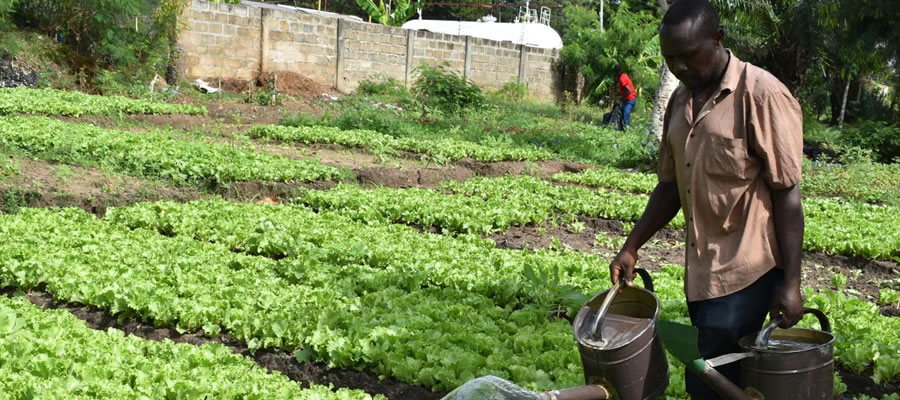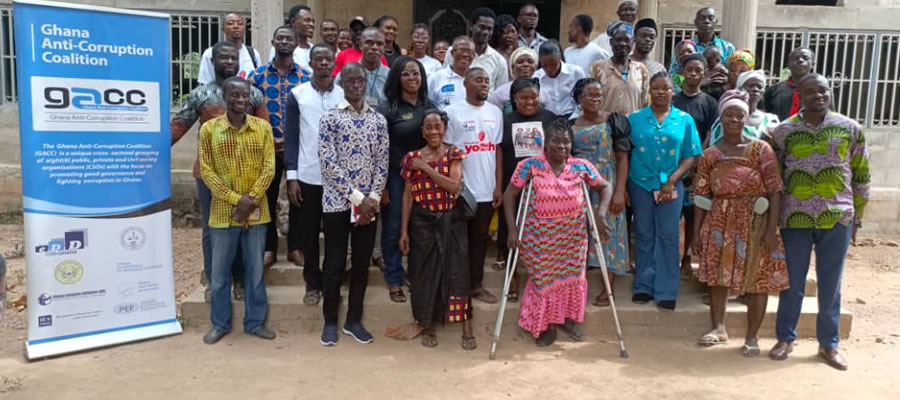

Health Care
Some of the indicators under the health sectors have been indicated below:
Number and Staffing Level
The level and distribution of health care resources is important for ensuring equity in access to quality health services. The health sector continues to be plagued with shortage of key health professionals and inequitable distribution of the available staff. This is largely due to the exodus of health professionals in search of greener pastures in other countries.
The doctor-population ratio in the district is improving steadily. Currently, there is 1 doctor to 44,095 of the population and 1 nurse to 1,055 persons.
Incidence of Diseases
List of Top Ten Diseases in the District
Malaria -54,009
Acute Respiratory Tract Infection (ARI) – 8,302
PUO (not malaria) – 6,907
Diarrhoea Diseases - 6,392
Intestinal Worms - 5,804
Rheumatism and Joint Pains- 4,557
Skin Diseases and Ulcers – 4,043
Anaemia - 3,626
Hypertension - 2,488
Malaria in Pregnancy – 2,211
List of Endemic and Communicable Diseases in the District
Malaria
Diarrhoea
HIV/AIDS
Urinary Schistosomiasis
Viral Hepatitis
Health Services Infrastructures
The district has been demarcated into four sub-districts by District Health Directorate, namely Nsawkaw, Seikwa, Badu and Debibi to facilitate access to health services.
There are one hospital, 5 Health Centers, 3 Rural Clinic, 2 Private Maternity Home / Clinic and 4 CHPS Centers.
All the Health Facilities in the district provide both clinical and preventive services.
There are 86 trained Traditional birth attendants and 68 are actively involved at service delivery at level ‘A’.
National Health Insurance Scheme
Act 650 of 2003 provides for the establishment of a National Health Insurance Scheme with the main objective of removing financial barriers which limits access to health care and nutritional services, particularly by the poor and vulnerable sections of the population.
Available data indicates that the proportion of the population registered under the scheme is 46.1 percent.
Nutrition
The District since the launch of the National Nutrition Policy (NNP) in 2016 has rolled out some interventions which aim to increase the coverage of high-impact nutrition specific interventions that ensure optimal nutrition of the inhabitants of the District throughout their lifecycle, with special reference to maternal health and child survival. It intends to address the underlying causes of malnutrition and to reposition nutrition as a priority multi-sectorial development issue in the District. The main emphasis is on improving the nutritional status of women and children from pregnancy to two years of age or the first 1000 days of life.
It is worthy to note that despite progress made in improving nutrition, there are still significant numbers for whom progress had not been fast enough in terms of reduction of malnutrition especially anaemia and stunting, had been slow and uneven.
In the District, one of every five children under age five suffer from stunting-being too short for one’s age-and possibly other form of under-nutrition. Children are supposed to take Vitamin A supplements till they turn 5years; however, most parents do not adhere to this.
Some of the challenges that are encountered generally in trying to scale-up nutrition include:
a. Reluctance by maternal mothers to take anaemic pills
b. Irregular visits by maternal mothers for antenatal care
c. Inadequate knowledge on nutritional issues by the population.
There are the Girls Iron-Folate Tablet Supplementation and the Micronutrient Powder (MNP) Supplementation given to pregnant women and children.
Date Created : 12/12/2018 6:52:53 AM












 facebook
facebook
 twitter
twitter
 Youtube
Youtube
 +233 593 831 280
+233 593 831 280 0800 430 430
0800 430 430 GPS: GE-231-4383
GPS: GE-231-4383 info@ghanadistricts.com
info@ghanadistricts.com Box GP1044, Accra, Ghana
Box GP1044, Accra, Ghana